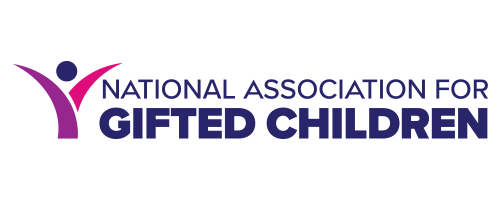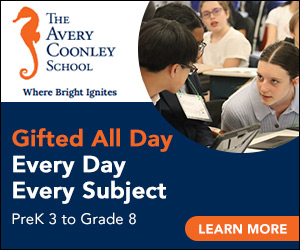Focusing on Equity in Coordinating a Gifted Program
Posted By Jolene K. Teske, Ed.D.
Being a Coordinator of Gifted in a school district is like living in a whirlwind. As you know if you’ve been in this field for any length of time at all, gifted programming is multi-faceted from the identification and programming to the staffing and funding to the social-emotional needs, and the list goes on. Within the exciting tumult, something guides the work, the North Star. For my district and team of consultants, our North Star is equity.
Understanding that equity and equality are not synonymous is fundamental in this work. Many educators cling to the historical belief that we must be consistent in our work with every student – making the work the same or equal for every student – to be fair. This often leads to a variety of problems in our work like scripted curricula, limiting rubrics, and ceilings on assessments. While this may be considered equal, it is not equitable, which is providing support for the varying needs of each student. To provide this support, a universal focus on equity with three main properties is important.
First, we must be conscious of our own biases. This requires reflection to know and understand them, but also to impact our actions. If we realize that we struggle with certain students, we must ask ourselves why. We must work on our own understandings and perceptions to ensure we support every student in our classrooms, not just those who are easiest to support.
Our equity work began with deep dives. We brought in Dr. Gil Whiting of Vanderbilt University to talk with us about implicit bias. We processed as he shared his work with Scholar Identity. We each took the Intercultural Development Inventory and reflected as individuals and as a department on our own biases. We engaged in equity challenges to build our understanding and commitment. We brought in Eddie Moore, Jr. to share his experiences with systemic racism and his passion for fighting injustice. We attended and supported students to present and attend the White Privilege Conference sponsored by The Privilege Institute. We invested in these efforts to build a solid base for our equity work.
Second, regardless of our desire to generalize, students are not the same. Students come to our classrooms with vast experiences, unique strengths and weaknesses, and a wide variety of personalities. One size cannot fit all.
Our work continued as we deconstructed and rebuilt our identification protocol for our district. We started this work by reviewing the NAGC Report State of the States Report. This provided a lens of what types of identification and programming are happening in other states. We then began evaluating our Eligibility Report and Protocols with identification and programming information from other states – Georgia, Ohio, Colorado, and Wisconsin. We then read Excellence Gaps in Education by Plucker and Peters (2017) and followed that learning by taking a deep dive into our district demographics. We compared our classroom, building, and district demographics to the demographics of our identified advanced learning students. We discovered that we had begun the work of moving toward proportional demographics, but we still had a lot of work to do. This led us to revise our identification eligibility guide and our protocols to be more inclusive (eliminating gate keeping scores), adding elements of qualitative data (with universal qualitative screening in grades K & 1), and changed our focus from a program serving Capital G Gifted students to a Talent Development Model (or Paradigm as described by David Yun Dai and Fei Chen in Three Paradigms of Gifted Education). Finally, we added Proportional Demographics to our department goals alongside our academic and social/emotional goals.
Third, education – and life – are not zero-sum games. All students can be winners. One should not be limited if another is supported. Advanced students need enrichment and support as much as students who struggle with learning need scaffolds and support. They need direct instruction, and they need materials that are challenging. We cannot expect them to wait while others in class catch up. We cannot expect them to be the teacher or the teacher’s aide. Additionally, our students need to be challenged more often than a pull-out program can provide. By working with teachers and providing extensions for advanced learners, we are building capacity in our teachers to benefit all advanced learners.
Our work continues as we work with the district curriculum coordinators, PLC leads, and teachers. We have spent two years learning the district curricula for English and math so that we are able to speak to standards in all grade levels. Knowing the standards helps us unpack them to create extensions that can take students deeper so we can promote analysis. Our work first centered around a Crosswalk of Bloom’s Taxonomy, Webb’s Depth of Knowledge, and Marzano’s Taxonomy. The goal was to determine the level of the standard required for the lesson and create an extension task that would take the students at least one level above where the standard landed. If possible, extending to analysis was always a goal. While continuing this work, we began adding cluster grouping based on Marcia Gentry’s An Investigation of the Effects of Total School Flexible Cluster Grouping on Identification, Achievement, and Classroom Practices to our middle school math courses. Our first year was a challenge with getting into the classes at least twice each week and planning specifically with those PLCs in addition to the other work to be done in each middle school, but we are confident we have, based on reflections, created improvements to implement this fall.
Being a Coordinator of Gifted Programming for an urban district is an incredibly rich experience, yet finding ways to develop equitable identification and programming is challenging. Our students, however, are worth it. So I encourage you to consider making equity your North Star. Dig in, do the work, and enjoy the joy of serving all students in your district with gifts and talents.


